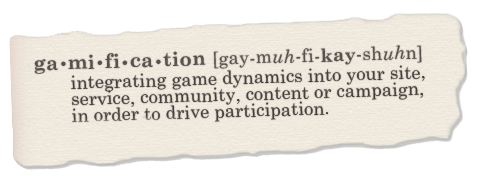
by Annie | Sep 9, 2015 | Education, Game Design, Interaction Design, Product Design, Psychology of Games
Early on in parenthood, I thought I’d somehow magically received the perfect child. He was no picky eater, rather quite the opposite. He was into steak, broccoli, watermelon, pretty much anything we put in front of him. …and then that phase ended. Nowadays, we spend dinnertimes bargaining, pleading, and joyfully cheering when even a single bite makes it down the hatch. Contrast that with the time he spends in front of a mobile device, wholly sucked in and willing to do anything to progress the game or storyline. That’s where new innovations like Yumit come in. Yumit is an interactive dinner tray that reinforces healthy eating habits by converting actual bites into virtual energy. Whether this actually has long term effects on kids’ experience and interaction with food remains to be seen. But more and more, the lines are being blurred between reality and the virtual world, which isn’t always a bad thing. After all, people are often much more engaged when cleaning a virtual room through a game than cleaning their actual room. Why? Because we all crave feedback for our actions, and online worlds often provide that instantaneous feedback to let us know the path toward a desired behavior. As for parenting, I’m on the fence as to whether I’ll try something like Yumit. While it may instantly boost veggie consumption, I’m curious about the lasting effects. But hey, I guess even one broccoli happily ingested is a...

by Annie | Aug 31, 2012 | Education, Game Design, Psychology of Games
Have you heard of gamification yet? If not, you will surely run across it at some point. Gamification is one of the hottest topics at the intersection of game design and business. Many companies are incorporating game design elements in business practices, both externally (e.g., marketing and consumer behavior) and internally (e.g., HR and employee training). In addition, gamification is being used to transform all kinds of fields, from education to journalism. If you’ve ever used a stamp card at a coffee shop (buy 10 and get one free) or gone through the LinkedIn registration process, you’ve been part of the gamification movement. People are just starting to discover the vast potential of gamification in changing human behavior, so many exciting things are happening in this field. If you’re interested in learning more, Coursera is offering a FREE online course on gamification, taught by Prof. Kevin Werbach from the Wharton School at my alma mater, the University of Pennsylvania. Over 70,000 people have already registered, myself included. You have until Sept. 9th to register, so get on it! (Coursera also has tons of other free online courses, so check them out if you get a...
by Annie | Jan 27, 2012 | Game Design, Psychology of Games
Game design is a balancing act. Literally. Not only do you have to balance the various tasks that fall under the umbrella of game design, but, more importantly, you’re responsible for balancing the gameplay experience. At the core of every well designed game is a carefully balanced spreadsheet. Numbers and stats can govern everything from a character’s jump height to the number of resources available. To create an experience that’s both fun and engaging, these numbers need to be tweaked, again and again. One of the things most people fail to realize is just how many tweakable variables there can be within even the simplest gameplay experiences. Creating a spreadsheet is a great exercise for challenging you to think critically about all the different components in your game. Start with the obvious ones, like levels, points, and time. Then, move on to more nitty gritty variables like the number of jumps a character needs to make to get to a certain goal. Think about what you want to teach your player and when to teach different skills. Using this theoretical framework as a guide, plug your best guesses into your spreadsheet, and then start playtesting. If a playable prototype isn’t yet available, conduct theoretical playtests. You’d be surprised how much balancing you can accomplish through imagination alone. (If Einstein could develop the theory of relativity through theoretical physics, you can balance a game through theoretical design.) The resulting numbers are one of the most critical parts of your design and will be invaluable for communicating gameplay elements to other members on your team. They will inform everything from the...

by Annie | Nov 23, 2011 | Game Design, Psychology of Games
A new version of Pop & Dodge is now available on the App Store. This version includes new powerups, new achievements, and a new tap mode. …wait a second. Tap mode? Aren’t our games supposed to be about physical activity? Exactly. In fact, that’s precisely why we put in Rookie Mode, where you can play the same game by tapping instead of jumping. The hook? The Advanced Mode (jump to play) offers more powerups, more points, and more achievements. Rookie Mode allows you to play Pop & Dodge when you’re on the bus, in the car, or anywhere else where you just can’t jump. Through tapping, you familiarize yourself with the mechanics of the game by using more standard iPhone inputs (i.e., tapping instead of jumping). We know this could be a risky move. Sure, there might be people who only play Rookie Mode and never convert to jumping. But that’s okay. We can’t force people to jump; we can only encourage them to do so through solid game mechanics and motivating rewards. Offering a tap mode allows us to reach players within their comfort zone and gently push them to change their habits, instead of starting out with something completely foreign. So now you’ve got no excuse. Whether you’re sitting, standing, or lying down, you can play Pop & Dodge anywhere, anytime. So grab the latest update...
by Annie | Nov 19, 2011 | Education, Game Design, Psychology of Games
...

by Annie | Nov 10, 2011 | Game Design, Psychology of Games
Growing up, I was tasked with practicing the piano a solid hour a day. Didn’t matter what I did within that hour, as long as I sat on that bench for 60 minutes. My parents figured that more practice time would naturally yield greater increases in musical skill. And this is true, to an extent. Experts now recommend that practice sessions, especially for young kids, are broken up into several short sessions a day. Three 10-minute sessions are better than one 30-minute session. Why? Because kids have short attention spans and need breaks. Shorter sessions come with greater focus and more purposeful practice. This is the same realization we’ve come to in our games. Sure, we can get people to try it out, but what’s more valuable is getting those people to come back day after day, several times a day. Retention is key. This is especially important for the types of games we’re making. In order to make any change in people’s physical activity habits, we have to keep them coming back. One play session that gets you out of breath is great, but it’s not a lifestyle change. To get people off the couch time and again, we have to facilitate habit-forming gameplay. How? We dig into our game design toolbox. Help players realize the importance of exercise, create compelling mechanics to get them moving, provide feedback to reinforce specific behaviors, and dole out rewards that matter. Easier said than done, but don’t you worry. We’ve got some ideas that will blow your socks off. Or at the very least, get you off that...





